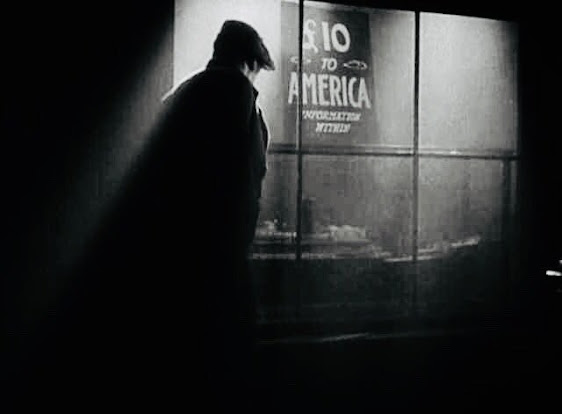The Informer (1935)
John Ford’s The Informer (1935)
The summary: 1920’s Ireland is in a state of economic
collapse. The country is run by an authoritian police state. The lower classes
are forced to operate outside of the laws in order to secure their safety and stability,
thus forming gangs which are under pursued and investigated by the authorities.
Our protagonist is in one these gangs. The film opens with him confessing to
one of his fellow gang members (this gang member is wanted by the police) that
he could not carry out the act of murder when asked by his fellow comrades.
After going hungry night after night with no money for food and an opportunity
to leave with his girlfriend for America, our protagonist decides to inform on
this comrade so he can acquire the reward money. After informing on this
comrade, the police locate and murder him. The protagonist then spends the rest
of the night going to bars with his newfound wealth to intoxicate himself to
drown out his guilt. His affiliated gang begins to question who informed on
their comrade. Their questioning then turns towards our protagonist who is
spending large amounts of money. Our protagonist lies and tries to cover up his
betrayal but can do nothing to suppress either the guilt or the surrounding
finger pointing exerted by his gang. His gang soon forces a confession from our
protagonist and sentence his to be executed. However, the comrade they leave in
charge to execute our protagonist decides that he does not have it in him to
commit murder and releases our comrade to fend for himself in a society in
which he has no allies, neither from his community nor his government.
Thematic element: Our protagonist has a strict set of
valves. He is unable to commit a murder. However, those values are then
completely undermined when he decides to inform on his comrade, thereby
inadvertently committing murder anyway. In choosing his individual needs over
the needs of the community, he has indirectly (and directly) gone against these
very values, alienating himself from his community and himself in the process.
John Ford will continue with these themes of morality in his
later works. The question of whether morality even exists, whether objective or
subjective to the individual or community.
Camerawork: In 1935, John Ford’s camerawork was
certainly not very conventional in this film and left many people uncertain if
it worked well. Ford uses a more expressionist approach in the foggy
intoxication of the protagonist’s world. Our protagonist is drunk for most of
the film and is expressed by Ford with a certain fluidity and imbalance in the
camera’s movement. The shot of the desolate Dublin town is dark and foggy,
presumably to capture the darkness and uncertainty of the specific period and
the people in it. Ford utilizes shadow to great effect, especially during the
scenes in which our protagonist must face his dark choices. (Keeping in mind
that this was done before the noir movement of the 1940s took affect).
Greatest Shot:
My pick for the greatest shot in the film. This shot specifically utilizes light and shadow to show our protagonist in a state of darkness but cut through with the light and hope of something better. Ironically, our protagonist makes his choice in choosing the allure of this hope, which ultimately brings him into a much darker state (sounds like the seeds of film noir?).
Legacy: The Informer was the surprise hit of 1935. It
warranted the attention to John Ford as a master of his work. The film received
Oscar nominations in 6 categories, including Best Picture, Best Director, Best
Actor in a Leading Role for Victor McLaglen, Best Screenplay, Best Music, and
Best Editing. The film would win 4 of these 6, Best Actor, Best Director, Best
Screenplay, and Best Music.




Comments
Post a Comment